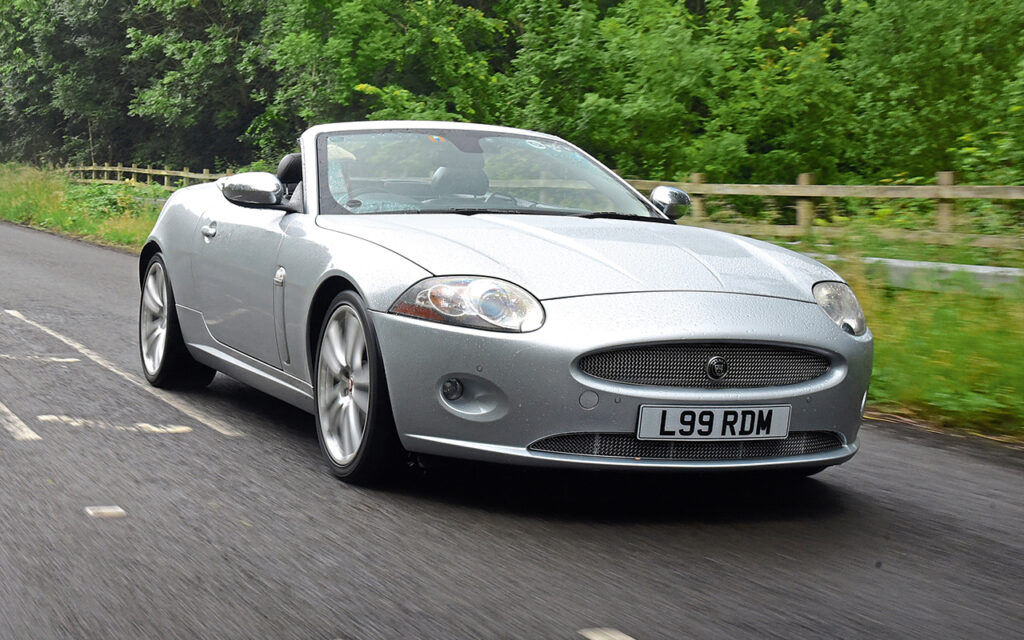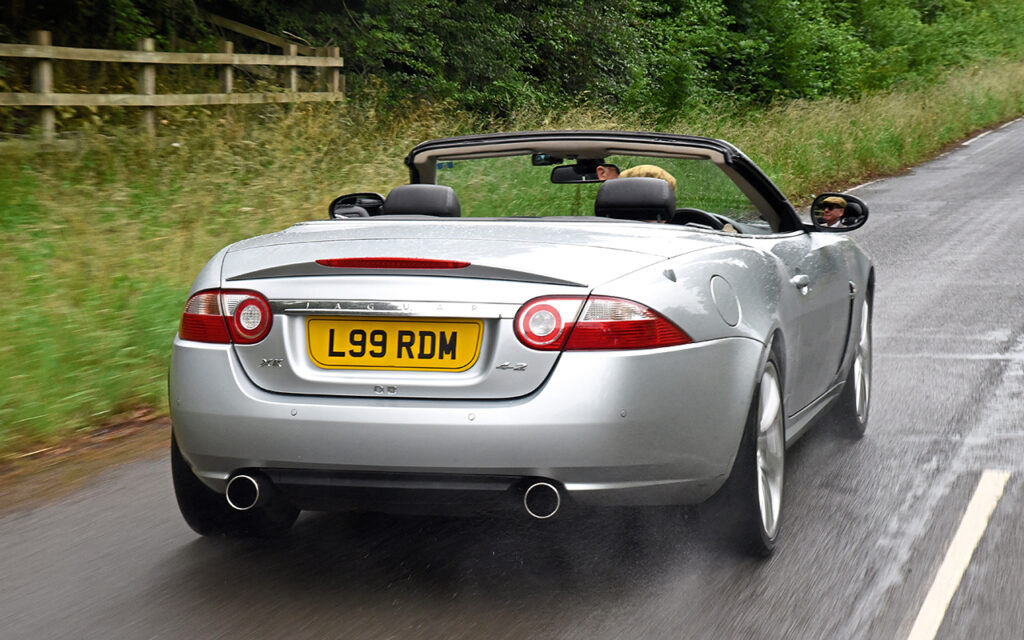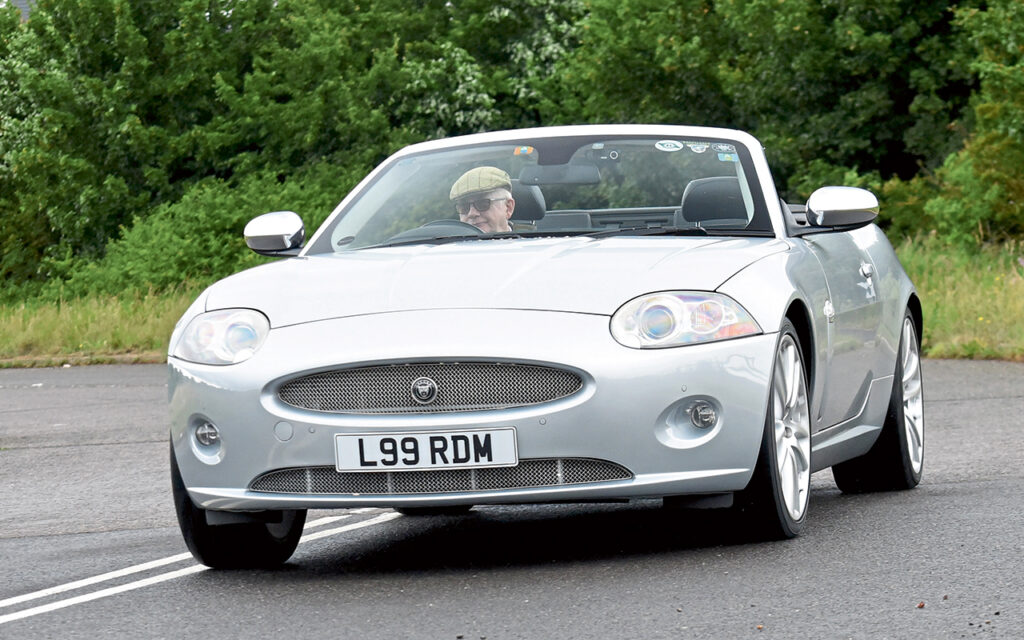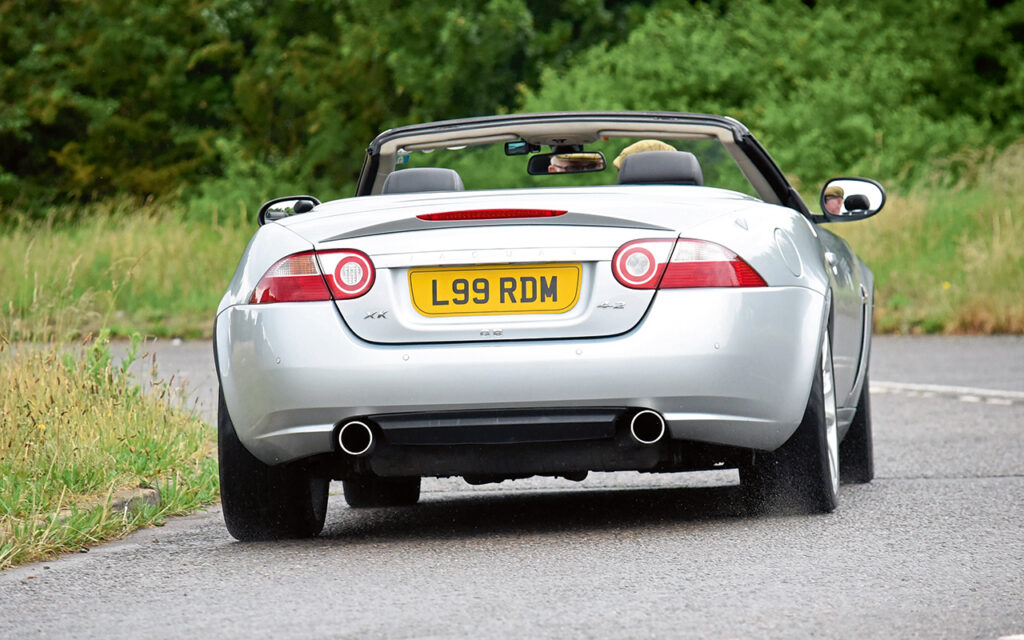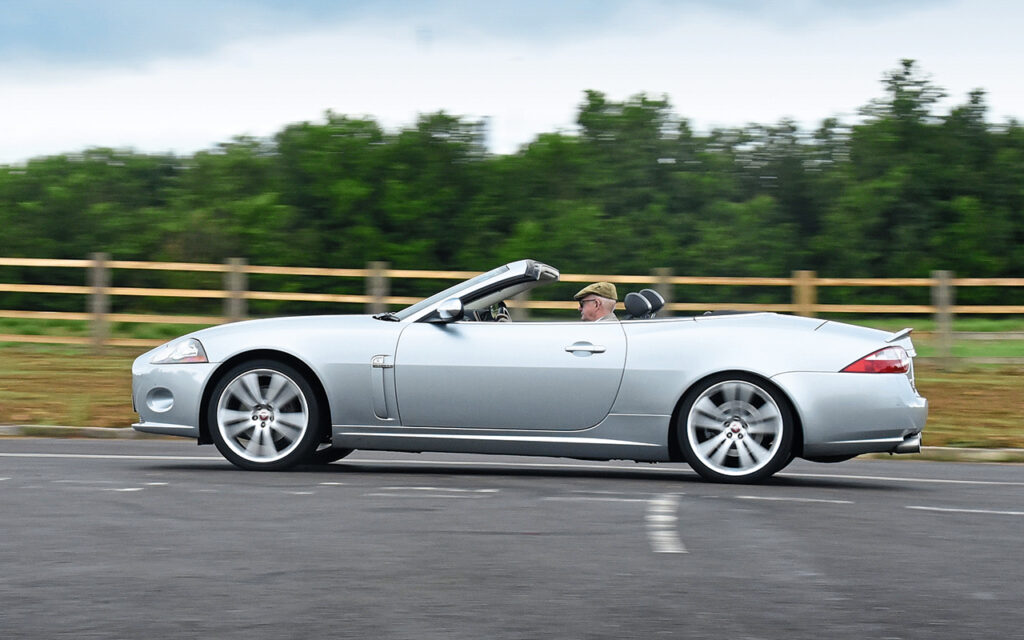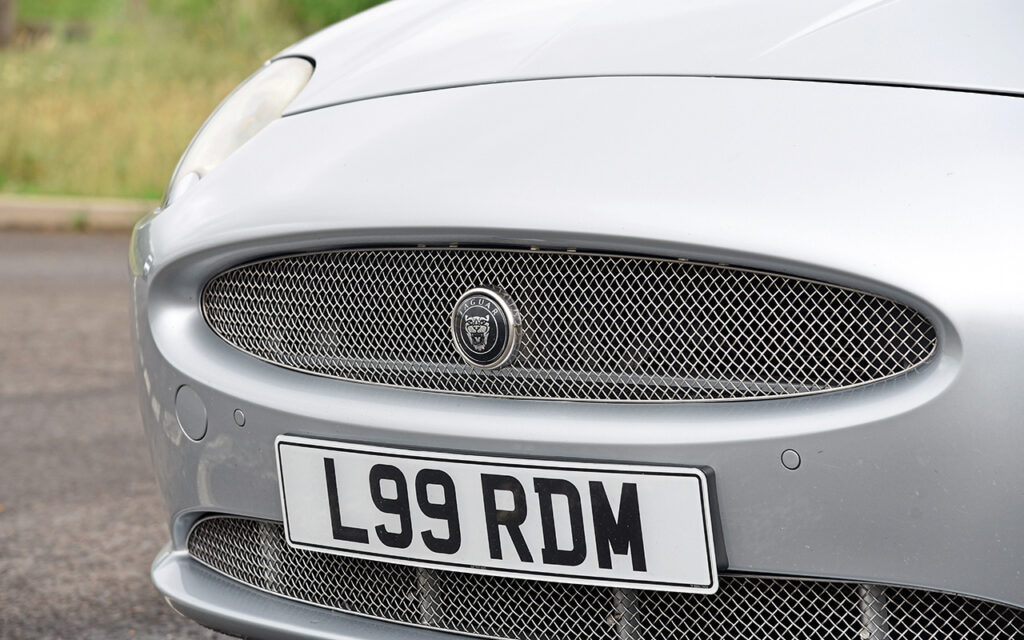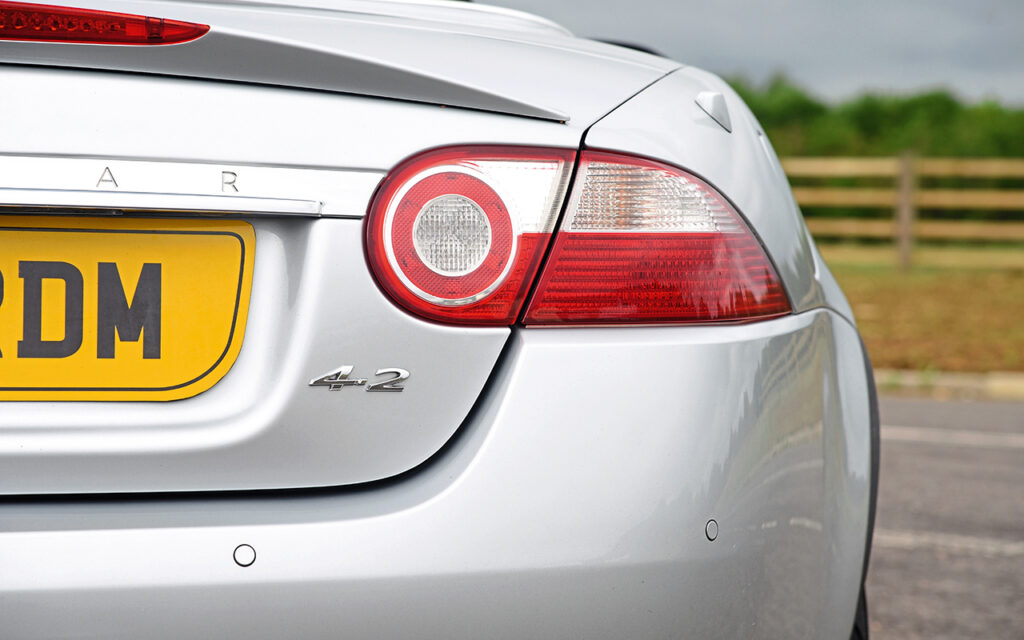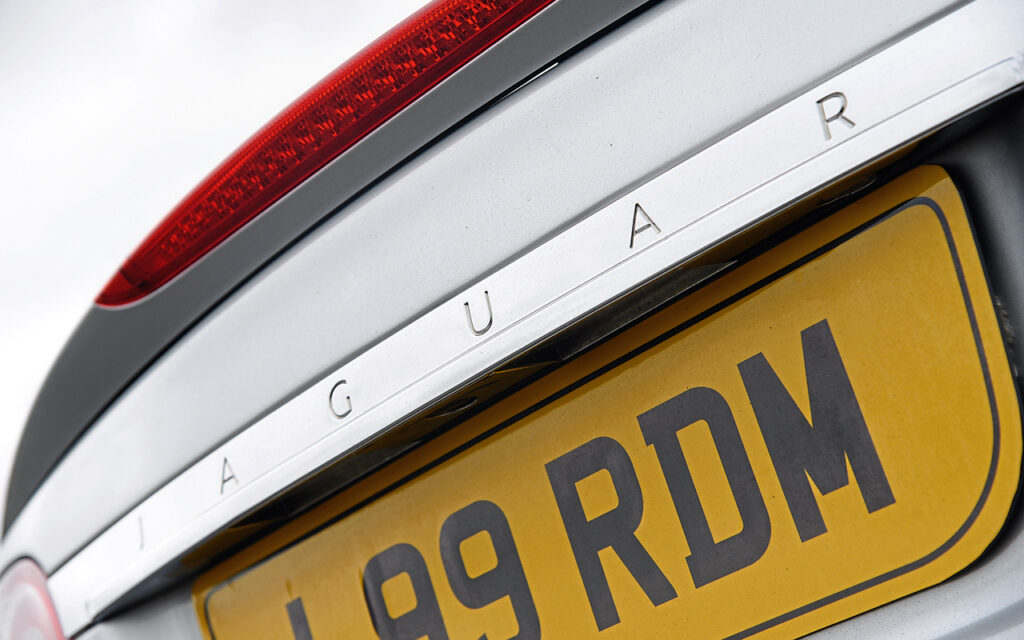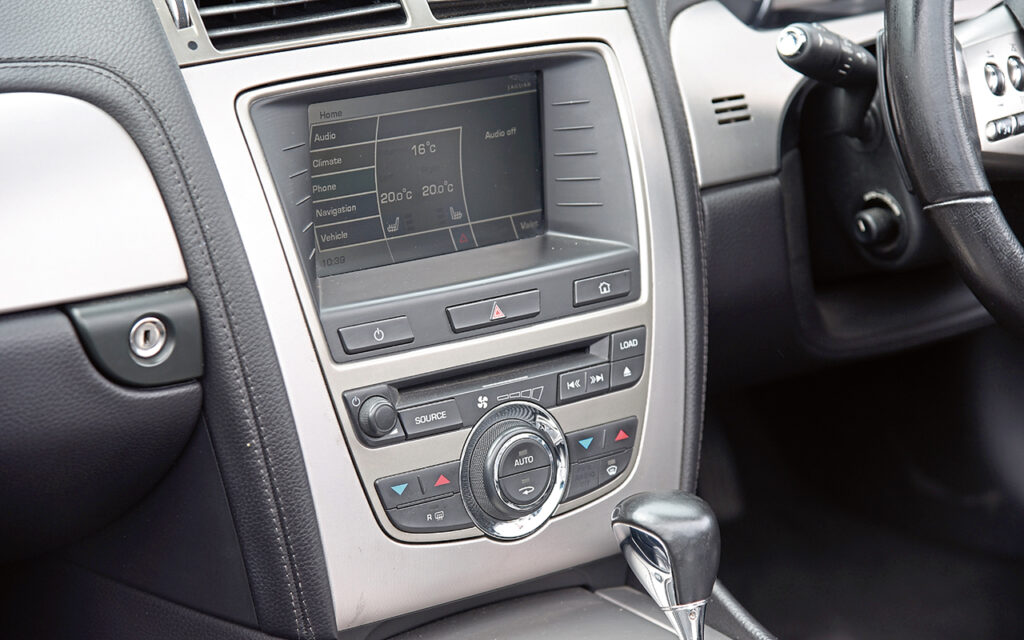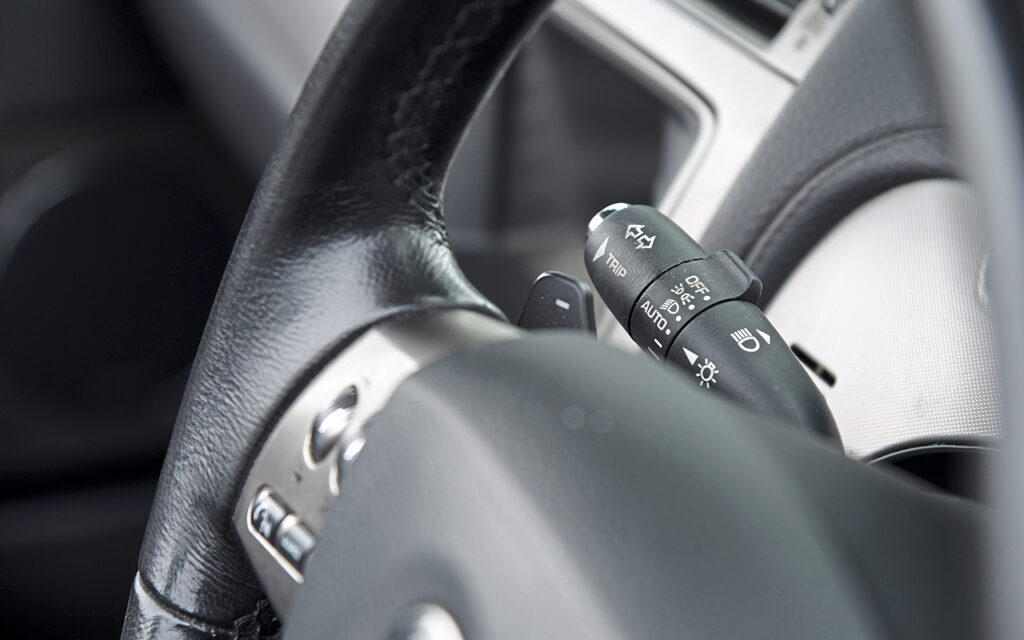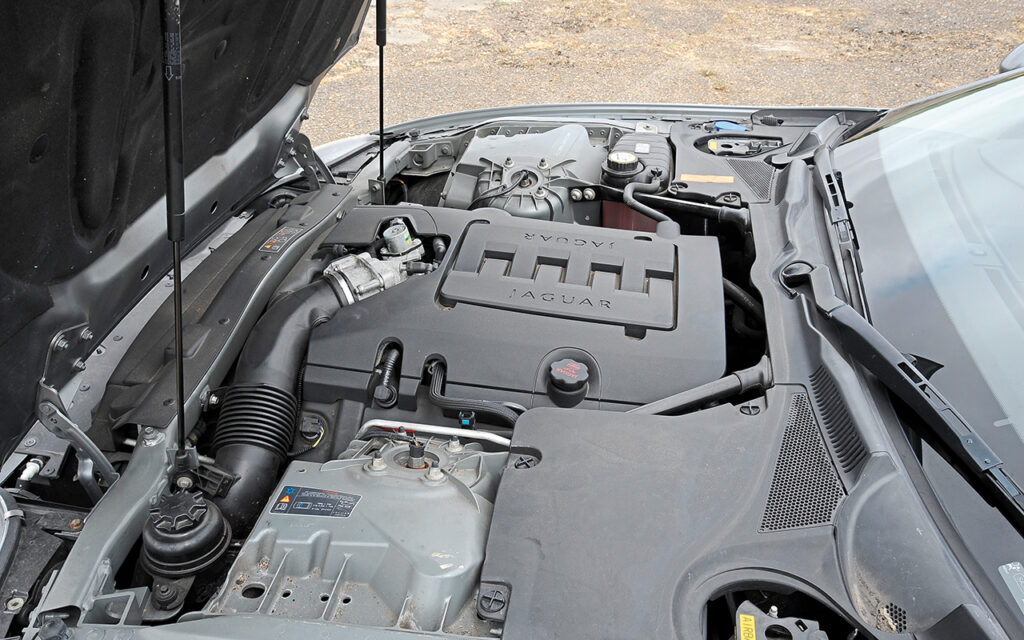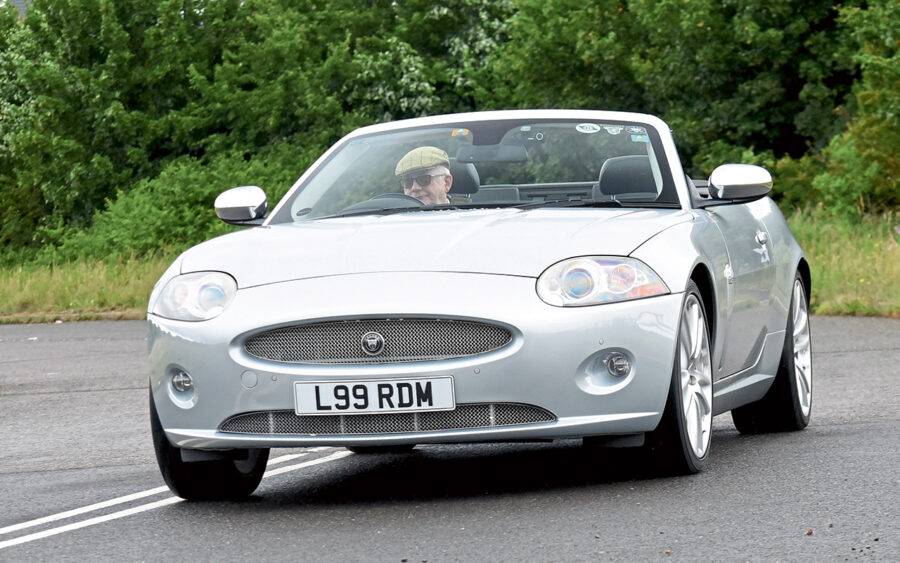With prices of early XK 4.2 convertibles still reasonable, there’s never been a better time to buy one of these modern, good-looking and highly entertaining sports cars
Words: Paul Walton
It’s often said by those in the know that the comedian with the best timing was the American Jack Benny. Said Dan Einstein, television archivist at the University of California, Los Angeles Film & Television Archive, “When he would turn to the audience and give them a look or wait a beat before he would say a retort, it was just right on the money.” Good it might have been, but not quite as perfect timing as anyone about to buy an early example of the X150 generation of XK 4.2 convertible, 15 years after the model made its debut. With summer here and examples down to under £10,000, there’s never been a better time to own one of these outstanding sports cars. And that’s no joke.
The second generation of XK (universally known by its internal codename, X150) might be 15 years old, but judging by this Liquid Silver convertible from 2007, the car remains as fresh and contemporary as when it debuted at the 2005 Frankfurt Motor Show. As a four-seat, front-engined coupe and convertible, the car was similar in concept to the outgoing XK8 (often referred to by its own project name, X100), yet its crisp, taut lines were in contrast to its predecessor’s softer curves.
The XK laid the foundations for Jaguar’s future design themes, which are still seen throughout its current range, including the facelifted XE saloon, the F-Type and even the all-electric I-Pace. As the first complete production car to be designed by a team led by the then-new design director Ian Callum, it was the result of the Scot’s desire for Jaguar to move away from its ‘retro design’ phase of the Nineties and early 2000s.
“This is Jaguar design moving on as it should do,” said Callum in 2005. “The new look is about power and elegance using clear, pure surfaces. Look at all our great cars in the past and they were muscular and taut, as well as subtle and curvaceous.”
With its wide rear haunches, long bonnet and instantly recognisable oval radiator grille, the XK convertible remains one of the prettiest cars from the past 20 years, even more than the current F-Type with its not-so-perfect proportions. The X150 was also the first production Jaguar convertible to have its canvas roof fold under a solid tonneau cover out of sight (instead of remaining on display behind the rear seats), allowing cleaner, more modern lines than the X100 XK8.
“The XK looks stunning,” reported Auto Express magazine in its 29 December 2006 issue, “and is an attractive leap forward over its predecessor.”
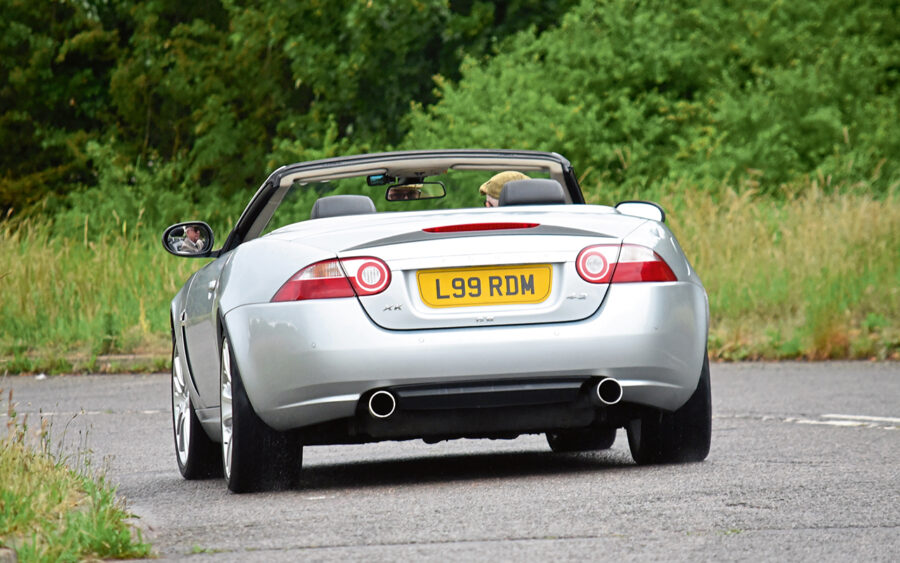
Although the design was new, the car’s drivetrain wasn’t. Yet while the XK used the same 300bhp, 4,196cc V8 and ZF six-speed automatic gearbox as the facelifted X100 from 2002, its 5.9-second 0-60mph time was slightly faster. That’s because, as the second Jaguar of the modern era (after the X350 XJ) to have an all-aluminium construction, the X150 is lighter than the car it replaced. It remains an impressive figure today, never mind a decade-and-a-half ago.
All of this makes the XK convertible’s current low values difficult to believe. Early 4.2 models from 2005-08 are down to £10k – a couple of grand less if you don’t mind high (150k-plus) mileage – rising to £15k-£17k for very low mileage or late, pre-facelift models from 2009. Considering the car was £65k when new, that’s hard depreciation. They’re also now cheaper than late X100 XK8 4.2-S convertibles, which are between £15,000 and £20,000. Amazing value considering the car’s looks, performance and heritage. So, what’s the catch?
“There isn’t one,” says Richard Simm from specialist SSS Jaguars. “I think they are brilliant, but very underrated and a great car for the future.” As for the heavy depreciation, “The XK suffers from a list of unfortunate but predictable issues, and it’s these gremlins that are putting people off. But they are always the same problems and they’re always fixable.”
The biggest issue is the ugly blemishes at the bottom of the doors and lower areas of the rear quarter panels, caused by stone chips allowing the aluminium structure to react with the environment. Ugly, but, thankfully, repairable through experienced specialists.
The 4.2 V8 is generally reliable, but can suffer from perished vacuum hoses and thermostat failure, and the catalytic converter can become worn and fail, often raising a fault code describing the cat’s efficiency as being below the threshold.
Electrically, the wiring for the radiator cooling fan can break down, causing it to run permanently, and an earth point behind the offside front wheelarch can corrode and break off, causing the headlights and indicators to operate erratically. The solution to the latter is to either have the earth point welded back on or find a new location for it.
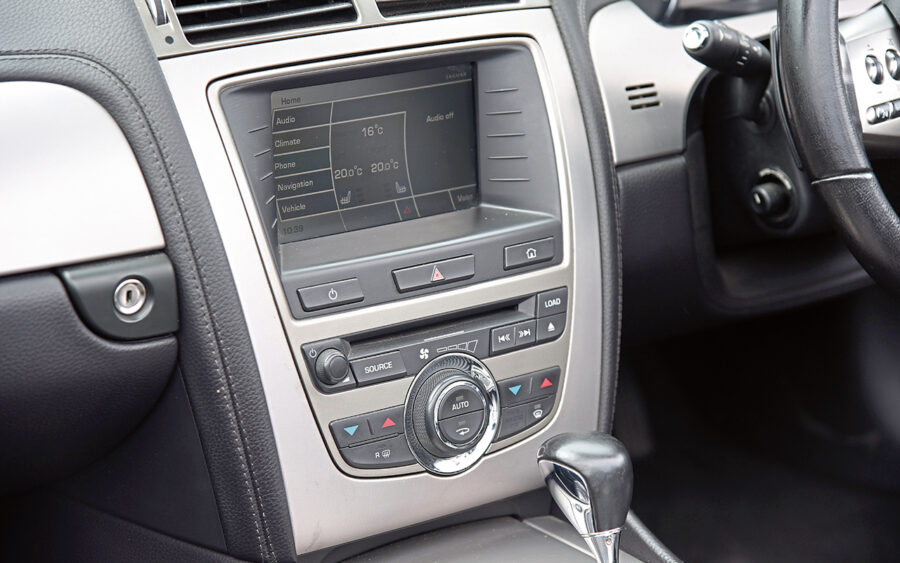
The interior of this 2007 model certainly doesn’t feel like it’s from a £10,000 car. The still-modern layout is a vast improvement over the X100’s cabin with its dated switchgear and too many Ford Granada hints for a luxury GT. This improvement is partly down to better design and partly due to the X150’s 7in touchscreen, which does away with XK8’s confusing rows of buttons for the ventilation and infotainment systems. The result is an interior that remains relatively contemporary, more so when aluminium like this in example has been specified for the dashboard facings rather than the traditional walnut veneer that was also available. The wood isn’t unpleasant, mind you, but it dates an otherwise modern car as carpet slippers and a cardigan would Kanye West.
The X150’s platform was developed specifically for the car, offering Jaguar’s engineers the chance to improve interior room over the X100, especially in the rear. It’s not an MPV, of course, and it’s still a tight squeeze, but occupants are less likely to lose limbs through lack of circulation.
Time for a drive. I press the red starter button located on the gearlever surround – a now familiar Jaguar feature that was first seen on the X150 – and the engine’s eight cylinders burst instantly into life with a deep, throaty roar. The exhaust note of this naturally aspirated V8 isn’t as theatrically loud as the later XKR 5.0 models or as over-engineered as the F-Type R’s, but its richness and depth is just as charismatic.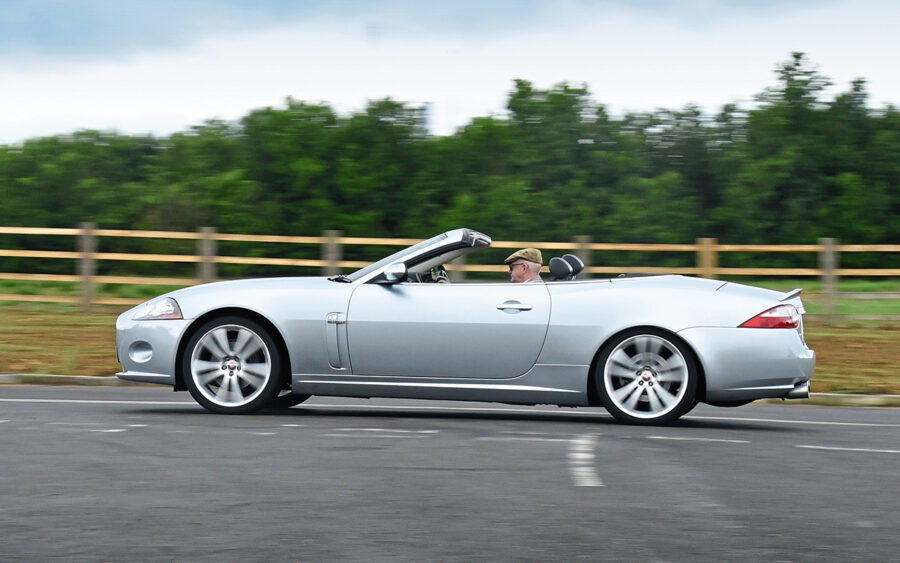
A button on the windscreen rail lowers the electric roof silently and quickly (the 18 seconds it takes being two quicker than both the Mercedes-Benz SL and Porsche 997 convertibles) and it folds underneath the rear-hinged tonneau cover.
The moment I squeeze the throttle, the six-speed ’box clicks down a couple of gears for a strong and instant surge of power. Only hedonists would be disappointed by the performance of these early XKs, their 4.2 V8s lacking the harder edge of the 2007 400bhp supercharged XKR model or the 5.0-litre V8 that arrived two years afterwards.
The gearbox changes are quick and seamless, but can be overridden by plastic paddles either side of the steering wheel, the first time they were seen on a production Jaguar. While the X150 does use the same six-speed ’box as the X100, it was substantially improved with the Bosch Mechatronic – an electro-hydraulic shift mechanism with adaptive shift strategy that responds to both road conditions and driving style. The engine management system also blips the throttle during manual downshifts, resulting in fast and responsive changes that become a moment to savor as much as any manual gear change.
The open version of the XK was designed before the coupe, resulting in a car that’s 30 percent stiffer than the X100 convertible, facilitated by rectangular-box-section sills that eliminate the need for additional and heavy stiffening panels. This tautness can be felt through corners as the car remains perfectly controlled, without any evidence of the dreaded scuttle-shake. With the suspension perfectly damped, instant changes of direction won’t affect it, while the steering is precise and perfectly weighted. Grip is excellent on all surfaces and, although the ride is firm, it doesn’t uncomfortably crash and bang over potholes.
At 4,791mm long and 2,070mm wide, the XK is a big car, yet it doesn’t feel it – its aluminium construction results in a car that’s as light and lithe as a two-seater half its size. Along with its responsive and powerful V8, the XK remains one of my favourite Jaguars of the modern era to drive.
Jaguar XK 4.2 Convertible: our verdict
No doubt the X150’s values will rise. Nothing this good deserves to stay this cheap for long. We’ve seen a considerable rise in the price of late X100s recently and there’s no reason why the second generation of XK won’t follow. Plus, the car has rarity on its side: just 54,549 X150s of all varieties were produced and, of those, a mere 10,406 were 4.2 convertibles, considerably fewer than its immediate predecessor.
“It’s not so much knowing when to speak, but when to pause,” Jack Benny once explained about his perfect timing. When it comes to XK convertibles, it’s not just knowing what to buy, but when. And that’s now.
